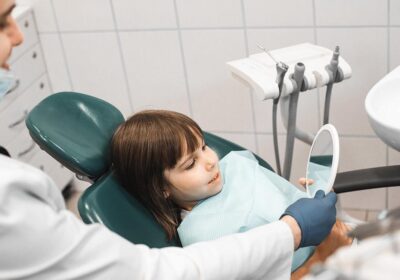
PTSD and Its Impact
What is PTSD?
Post-traumatic stress disorder (PTSD) is a mental health condition that arises after experiencing or witnessing a traumatic event. These events could include natural disasters, accidents, violence, or combat situations. PTSD is not a sign of weakness but a response to overwhelming stress. Symptoms can manifest immediately or even years later, depending on the individual.
Common Symptoms of PTSD
The symptoms of PTSD vary from person to person, but they generally fall into four categories:
- Intrusive thoughts: These include flashbacks, nightmares, or distressing memories of the traumatic event.
- Avoidance behaviors: Individuals may avoid places, people, or activities that remind them of the trauma.
- Negative changes in mood or thinking: This might involve feeling detached, hopeless, or having difficulty maintaining close relationships.
- Heightened arousal and reactivity: Symptoms such as irritability, difficulty sleeping, or being easily startled are common.
Symptoms of posttraumatic stress disorder (PTSD) can also interfere with relationships, making it hard to trust others or communicate effectively.
How PTSD Affects Daily Life
Living with PTSD can be exhausting and isolating. It often disrupts daily routines, including work, school, and social interactions. For example:
- Difficulty concentrating or completing tasks at work.
- Struggles with maintaining healthy sleep and eating habits due to anxiety or nightmares.
- Avoiding social situations or withdrawing from loved ones.
These challenges can lead to a vicious cycle where symptoms worsen over time. PTSD symptoms can also deeply impact emotional well-being, making routine tasks feel overwhelming. Recognizing these effects is the first step toward seeking help and finding effective treatment options.
The Importance of Early Diagnosis
Steps in Diagnosing PTSD
Recognizing PTSD early can make a huge difference in treatment success. The process usually begins with a healthcare professional asking detailed questions about symptoms, behaviors, and life events. This step often includes:
- Documenting any traumatic events that may have triggered symptoms.
- Evaluating the severity and duration of symptoms like flashbacks, avoidance, or hypervigilance.
- Screening for other mental health conditions that might overlap, such as depression or anxiety.
A formal diagnosis is typically made if symptoms persist for over a month and significantly affect daily life. For individuals experiencing symptoms within the first month, healthcare providers may explore conditions like acute stress disorder to differentiate between short-term and long-term impacts.
Role of Healthcare Professionals
Healthcare providers play a key role in identifying PTSD. General practitioners, psychologists, and psychiatrists often work together to assess and diagnose the condition. They rely on:
- Patient interviews to understand emotional and physical responses.
- Standardized diagnostic tools like questionnaires or structured interviews.
- Observations of how symptoms disrupt daily routines, relationships, or work.
Collaboration among professionals ensures a well-rounded approach, often leading to a more accurate diagnosis and tailored treatment plan.
Challenges in Identifying PTSD
Diagnosing PTSD isn’t always straightforward. Many individuals may not seek help immediately due to stigma, lack of awareness, or fear of revisiting traumatic memories. Common challenges include:
- Symptoms that overlap with other conditions, like anxiety or mood disorders.
- Delayed onset of symptoms, which can occur months or even years after the trauma.
- Cultural or personal barriers that prevent open discussions about mental health.
Overcoming these hurdles often requires patience, education, and consistent follow-ups to ensure that individuals receive the care they need.
Psychotherapy as a Core Treatment Option
Cognitive Behavioral Therapy (CBT)
Cognitive Behavioral Therapy (CBT) is widely recognized as one of the most effective treatments for PTSD. It focuses on addressing the connection between thoughts, emotions, and behaviors. By identifying and challenging unhelpful thought patterns, individuals can develop healthier coping mechanisms. Typically, CBT is structured into 12–16 sessions, either one-on-one or in group settings. CBT’s structured approach provides a clear pathway for individuals to regain control over their lives.
Exposure Therapy Techniques
Exposure therapy is a specialized form of CBT that encourages patients to confront trauma-related memories, feelings, or situations in a controlled and safe environment. The goal is to reduce avoidance and help individuals realize that these triggers are not inherently dangerous. Sessions often involve gradual exposure, starting with less distressing scenarios and building up to more challenging ones. This step-by-step process helps desensitize individuals to their trauma over time.
Group vs. Individual Therapy
Choosing between group and individual therapy depends on personal preferences and needs. Individual therapy offers a private space to delve deeply into personal experiences, while group therapy fosters a sense of community and shared understanding. Many find healing in hearing others’ stories and realizing they’re not alone. Both formats have their unique benefits, and sometimes, a combination of the two can be the most effective approach.
Exploring Trauma-Focused Therapies
Prolonged Exposure Therapy
Prolonged Exposure Therapy is a structured approach that encourages individuals to gradually confront trauma-related memories, feelings, and situations they’ve been avoiding. The idea is that by facing these fears in a safe and controlled way, the emotional grip of the trauma lessens over time. Sessions typically last 60 to 120 minutes and are spread out over a three-month period. This therapy can be particularly helpful for those struggling with avoidance behaviors and intense fear responses.
Narrative Exposure Therapy
Narrative Exposure Therapy (NET) helps individuals create a cohesive life story that integrates their traumatic experiences. This therapy is often used in group settings, especially with refugees or populations exposed to repeated trauma. By focusing on the sequence of life events, NET aims to provide a sense of continuity and understanding, helping individuals process their experiences in a meaningful way.
Eye Movement Desensitization and Reprocessing (EMDR)
One of the more innovative approaches, EMDR, combines elements of exposure therapy with guided eye movements. Patients briefly focus on the traumatic memory while following a therapist’s hand or another stimulus. This dual attention task has been shown to reduce the emotional intensity and vividness of trauma memories. Unlike other therapies, EMDR does not require detailed recounting of the trauma or extensive homework, making it a unique option for many.
Medication Options for PTSD Management
Selective Serotonin Reuptake Inhibitors (SSRIs)
Selective serotonin reuptake inhibitors, or SSRIs, are often the first line of medication prescribed for PTSD. The FDA has approved only two SSRIs for treating this condition: sertraline (commonly known as Zoloft) and paroxetine (Paxil). These medications are designed to help regulate mood by increasing the levels of serotonin in the brain. For many, they can reduce symptoms like anxiety, depression, and intrusive thoughts. However, it may take several weeks to notice improvements, and side effects such as nausea or changes in sleep patterns can occur. If one SSRI doesn’t work, a healthcare provider might recommend trying another.
Alternative Medications
While SSRIs are the primary choice, other medications may also be considered, especially if SSRIs prove ineffective. Venlafaxine (Effexor XR), an SNRI (serotonin-norepinephrine reuptake inhibitor), is sometimes prescribed off-label for PTSD. Additionally, prazosin, a drug originally developed to treat high blood pressure, has shown promise in reducing nightmares and improving sleep quality for some individuals with PTSD. Anti-anxiety medications may also be used, but these are typically prescribed for short-term relief due to their potential for dependency.
Potential Side Effects and Considerations
Medications for PTSD are not without risks. Common side effects of SSRIs include gastrointestinal issues, headaches, and fatigue. More severe reactions, though rare, can include increased anxiety or suicidal thoughts, especially during the initial weeks of treatment. It’s critical for patients to communicate openly with their healthcare providers about any side effects or concerns. Adjusting dosages or switching medications may be necessary to find the most effective and tolerable option. Withdrawal symptoms can also occur if medications are stopped abruptly, so tapering off under medical supervision is advised.
Complementary and Alternative Therapies
Acupuncture and Its Benefits
Acupuncture has been gaining attention as a potential aid for individuals managing PTSD. This ancient practice involves inserting thin needles into specific points on the body to stimulate energy flow. For PTSD sufferers, acupuncture may help alleviate symptoms such as anxiety, insomnia, and hyperarousal. Some studies suggest that it can promote relaxation and improve overall emotional well-being. While not a standalone treatment, it can complement other therapies effectively.
Mindfulness and Meditation Practices
Mindfulness and meditation are increasingly recognized as valuable tools for PTSD management. These practices encourage individuals to focus on the present moment, reducing stress and intrusive thoughts. Techniques like guided meditation, deep breathing, and body scans can help regulate emotions and improve mental clarity. Mindfulness, in particular, offers a non-invasive way to foster a sense of control over one’s thoughts and feelings. For many, these practices become a daily ritual that supports long-term recovery.
Exercise and Physical Activity
Regular physical activity can play a key role in managing PTSD symptoms. Activities like yoga, walking, or swimming not only boost physical health but also improve mood and reduce stress. Exercise triggers the release of endorphins, which act as natural mood lifters. Additionally, structured routines such as group fitness classes can provide a sense of community and support. Incorporating exercise into a treatment plan can enhance its effectiveness, offering both mental and physical benefits.
Support Systems and Peer Networks
Role of Family and Friends
Family and friends often play a critical role in the recovery process for individuals with PTSD. Their support can provide a sense of safety and stability, which is essential for healing. Simply being present and offering a listening ear can make a significant difference. Loved ones should aim to remain patient and understanding, even when the individual exhibits challenging behaviors such as irritability or withdrawal. Encouraging open communication and avoiding judgment can help build trust and emotional connection.
Community Support Groups
Joining a community support group can be a powerful way for individuals with PTSD to feel less alone. These groups offer a safe space to share experiences, learn coping strategies, and connect with others who truly understand. Many organizations, such as the Trauma Survivors Network, provide access to trained individuals and resources specifically tailored to trauma recovery. Group settings can help participants feel validated and supported, reducing feelings of isolation.
Charities and Non-Profit Organizations
Numerous charities and non-profits are dedicated to assisting those living with PTSD. These organizations often provide free or low-cost services, such as counseling, peer support, and educational workshops. Some focus on specific populations, like veterans or survivors of abuse, ensuring that their programs meet unique needs. Peer support through these networks can be particularly impactful, as it fosters acceptance and offers a sense of belonging, as highlighted by peer support initiatives.
Specialized Treatment for Unique Populations
Veterans and Military Personnel
Veterans and active military personnel often face unique challenges when dealing with PTSD. Combat experiences, prolonged exposure to high-stress environments, and the culture of stoicism within the military can make it difficult for individuals to seek help. Tailored treatments for this group often focus on trauma-specific therapies, such as Prolonged Exposure Therapy or Eye Movement Desensitization and Reprocessing (EMDR). Peer support groups, often led by other veterans, also play a critical role in recovery by fostering a sense of shared understanding and camaraderie. Additionally, emerging treatments like psychedelic-assisted therapy are being explored to address complex trauma in this population.
Children and Adolescents
PTSD in younger individuals requires a different approach due to their developmental stages and emotional needs. Therapies like Trauma-Focused Cognitive Behavioral Therapy (TF-CBT) are commonly used, as they incorporate both the child and their caregivers in the healing process. Play therapy and art-based interventions can also be effective, providing a non-verbal outlet for children to process their trauma. Regular monitoring and collaboration with schools ensure that children receive consistent support across all aspects of their lives.
Survivors of Abuse and Violence
For individuals who have experienced abuse or violence, treatment often involves addressing feelings of shame, guilt, and mistrust. Narrative Exposure Therapy (NET) can be particularly beneficial, as it helps survivors create a coherent story of their experiences, reclaiming their sense of identity. Group therapy sessions also offer a safe space for survivors to connect and share their journeys, reducing feelings of isolation. In cases of severe trauma, integrating therapy with medication may be necessary to manage symptoms effectively.
Combining Therapies for Optimal Outcomes
Benefits of Integrated Treatment Plans
When it comes to managing PTSD, no single approach works for everyone. Blending multiple therapies often provides the most effective results by addressing both the emotional and physical aspects of the condition. For instance, combining trauma-focused psychotherapy with medication can help regulate symptoms while also tackling the underlying causes. A tailored plan might include:
- Cognitive Behavioral Therapy (CBT) to reframe negative thought patterns.
- Medications like selective serotonin reuptake inhibitors (SSRIs) to stabilize mood.
- Complementary therapies such as mindfulness practices for stress reduction.
This combination allows for a more holistic approach, ensuring that different facets of PTSD are addressed simultaneously.
Balancing Medication and Psychotherapy
Striking the right balance between medication and therapy is key. While medications can provide immediate relief from symptoms like anxiety or depression, therapy works on long-term healing. For example, a randomized clinical trial showed that combining brexpiprazole with sertraline significantly improved PTSD symptoms. Patients often find that medication helps them feel stable enough to engage fully in therapeutic sessions. However, regular monitoring ensures that neither approach overshadows the other.
Monitoring Progress and Adjusting Approaches
Treatment isn’t a one-size-fits-all process. Regular check-ins with healthcare providers help track progress and make adjustments as needed. This might mean switching from individual to group therapy or exploring alternative medications if side effects arise. Evidence also suggests that trauma-focused psychotherapies remain a cornerstone of PTSD treatment, often serving as the foundation for integrated plans. By staying flexible, healthcare professionals can ensure that the treatment evolves alongside the patient’s needs.
Addressing Barriers to Treatment
Overcoming Stigma Around PTSD
Stigma remains one of the biggest hurdles for individuals seeking help for PTSD. Many people hesitate to reach out due to fears of being judged or misunderstood. This stigma can prevent someone from taking that first step toward recovery. Public education campaigns and open conversations about mental health can help reduce this stigma. Encouraging workplaces and communities to support mental health awareness is another way to create a safe environment for those affected.
Access to Mental Health Services
Accessing mental health services isn’t always straightforward. For many, especially in rural or underserved areas, finding qualified professionals can be a challenge. Limited availability of specialists, long wait times, and geographical constraints often make it difficult. Telehealth platforms and mobile health apps are emerging solutions, bridging the gap for those unable to visit clinics in person. For example, implementing PTSD treatment in primary care could make these services more accessible to patients who might otherwise go untreated.
Financial and Logistical Challenges
The cost of therapy and medication can be a significant barrier. Even with insurance, co-pays and out-of-pocket expenses can add up, making treatment unaffordable for some. Beyond finances, logistical challenges like transportation, childcare, or inflexible work hours can make attending regular therapy sessions nearly impossible. Offering sliding scale fees, community-based support programs, and workplace flexibility can help ease these burdens. Additionally, addressing trauma survivors’ barriers such as avoidance behaviors and limited resources is crucial to improving access.
The Role of Technology in PTSD Treatment
Virtual Reality Exposure Therapy
Virtual reality (VR) is changing the way PTSD is treated. By creating immersive environments, VR allows individuals to safely revisit traumatic experiences in a controlled setting. This method, sometimes referred to as Virtual Reality Exposure Therapy (VRET), helps patients process their trauma without the risks associated with real-world exposure. For example, a recent study demonstrated how integrating technology in therapy can positively impact both clinicians and patients. This approach is particularly effective for individuals who struggle with traditional talk therapy.
Mobile Apps for PTSD Management
Mobile apps are becoming a go-to resource for managing PTSD symptoms. These apps offer tools like guided meditations, symptom trackers, and even emergency support options. Some apps are designed specifically to complement existing therapies, ensuring that patients can continue their progress outside of a therapist’s office. Many also include educational resources, helping users understand their condition better. Accessibility is the key feature here, as these apps are often free or low-cost, making them an excellent option for those with limited resources.
Telehealth and Online Counseling
Telehealth has revolutionized access to mental health care for PTSD sufferers. Online counseling sessions make it easier for people in remote areas or those with mobility issues to connect with licensed therapists. This approach also reduces the stigma often associated with seeking treatment, as sessions can take place in the comfort of one’s home. Telehealth platforms often include features like secure messaging and video conferencing, ensuring that patients receive quality care without compromising privacy.
Future Directions in PTSD Research and Treatment
Emerging Therapies and Innovations
The field of PTSD treatment is constantly evolving, with emerging therapies offering new hope for individuals who struggle with trauma. One area gaining significant attention is the use of psychedelic-assisted therapy. Clinical studies are exploring the potential of substances like psilocybin to help patients process trauma in a controlled therapeutic environment. Psychedelic interventions for PTSD have shown promise in addressing not only PTSD symptoms but also related disorders, paving the way for innovative approaches to healing.
Other innovations include advancements in neurofeedback and brain stimulation techniques. These methods aim to retrain the brain’s response to trauma, helping individuals regain control over their emotional and physiological reactions.
Long-Term Outcomes of Current Treatments
While many treatments for PTSD have proven effective in the short term, understanding their long-term impact is critical. Researchers are focusing on how therapies like Cognitive Behavioral Therapy (CBT) and Eye Movement Desensitization and Reprocessing (EMDR) influence patients years after treatment. This research helps refine existing methods and ensures that individuals maintain progress over time.
Additionally, studies are examining the role of maintenance strategies, such as periodic therapy sessions or ongoing peer support, in preventing relapse. These findings will provide valuable insights into sustaining mental health improvements.
The Need for Continued Advocacy
Despite advancements in treatment, barriers to accessing care remain a significant challenge. Advocacy efforts are essential to address issues like stigma, funding for mental health services, and equitable access to care for underserved populations. Public awareness campaigns and policy changes can help ensure that PTSD treatments reach those who need them most.
Furthermore, collaboration between researchers, clinicians, and policymakers is vital to drive innovation and make cutting-edge treatments widely available. By prioritizing PTSD research and treatment, society can take meaningful steps toward reducing the long-term impact of trauma on individuals and communities.


















